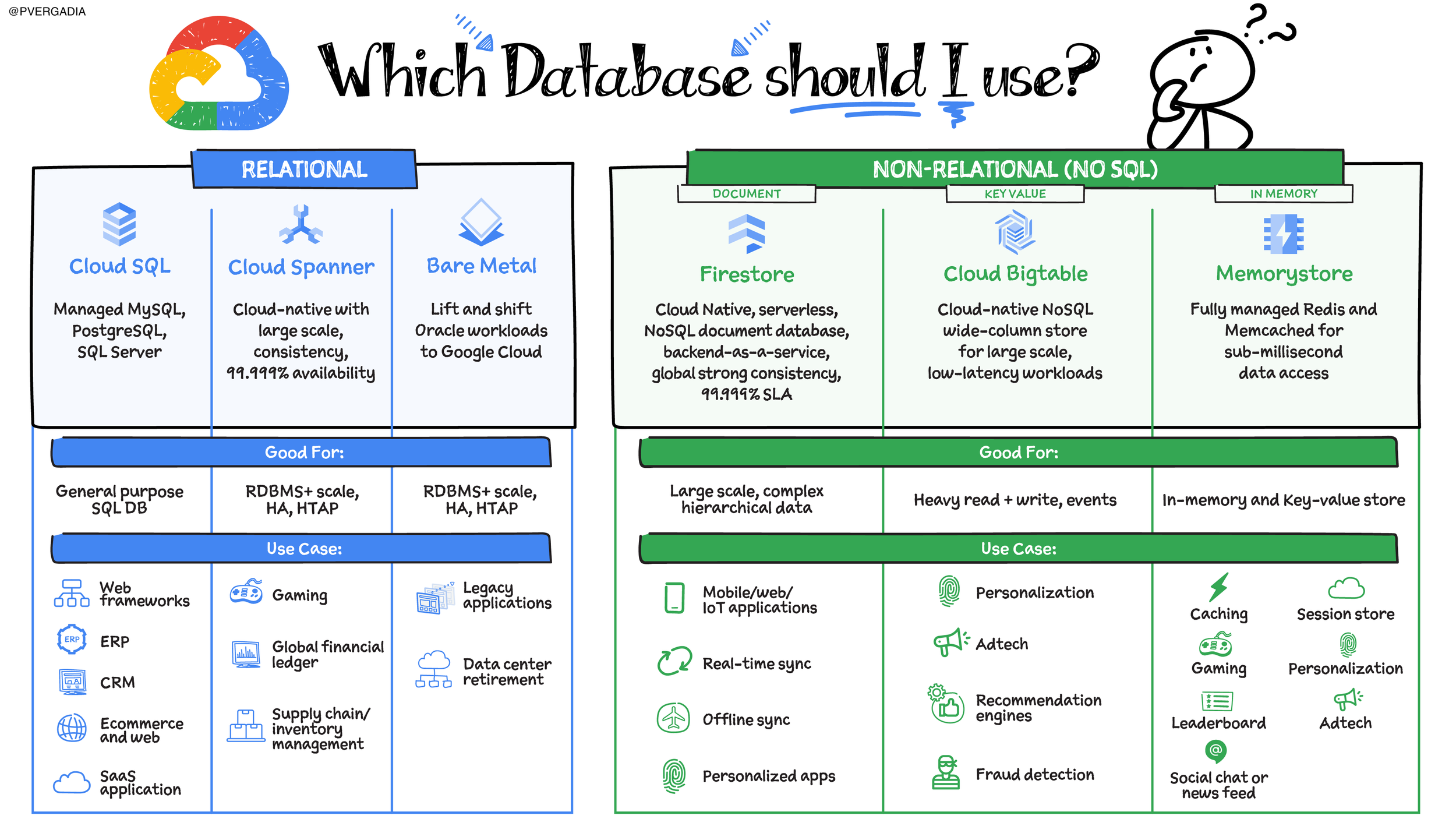
Choosing the Right Google Cloud Database: A Quick Guide
Picking the perfect database for your application depends on its function: handling transactions, analyzing data, storing data in-memory, and so on. Here's a breakdown of Google Cloud databases we covered earlier, highlighting their strengths and ideal uses:
Relational Databases:
Cloud SQL: Manages MySQL, PostgreSQL, and SQL Server databases, reducing maintenance and automating tasks for general-purpose web applications, CRM, ERP, SaaS, and e-commerce.
Cloud Spanner: This globally-distributed database offers strong consistency, combining relational structure with NoSQL-like scalability. It's ideal for highly scalable applications demanding strong consistency and high availability, such as gaming, payments, financial ledgers, retail banking, and inventory management.
Bare Metal Solution: This hardware option lets you run specialized workloads with low latency on Google Cloud. It's specifically useful for lifting and shifting Oracle databases for data center retirement and legacy application modernization (refer to Chapter 1 for details).
Non-relational Databases:
Firestore: This serverless document database provides strong consistency, ACID transactions, and real-time data support, making it perfect for general-purpose applications like e-commerce, gaming, IoT, real-time dashboards, and mobile apps with online and offline data access.
Cloud Bigtable: This database stores massive amounts of single-keyed data (terabytes/petabytes) with very low latency. It's ideal for large datasets requiring high read/write throughput and low latency (single-digit milliseconds). It also integrates with Apache ecosystem tools for MapReduce operations.
MemoryStore: This managed in-memory data store service for Redis and Memcached offers extremely low latency, making it ideal for in-memory data storage and caching for web/mobile apps, gaming, leaderboards, social media, chat, and newsfeed applications.
